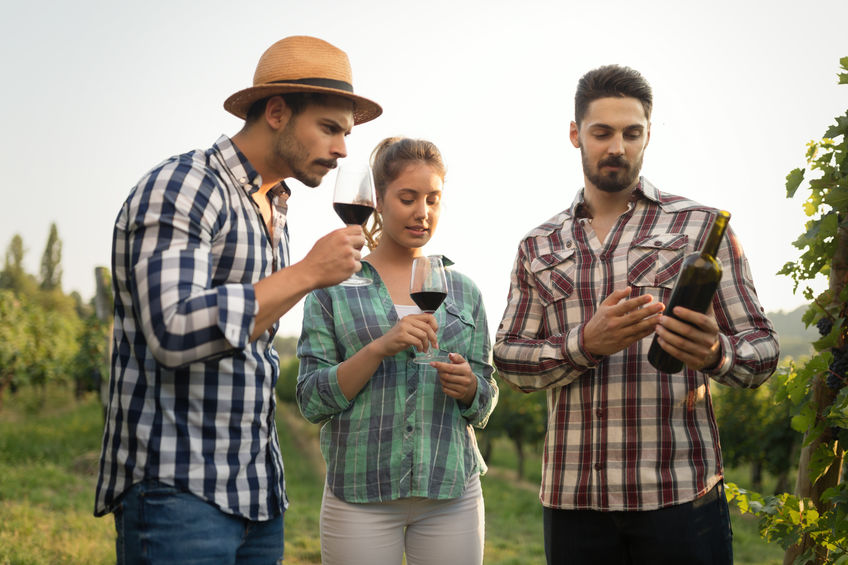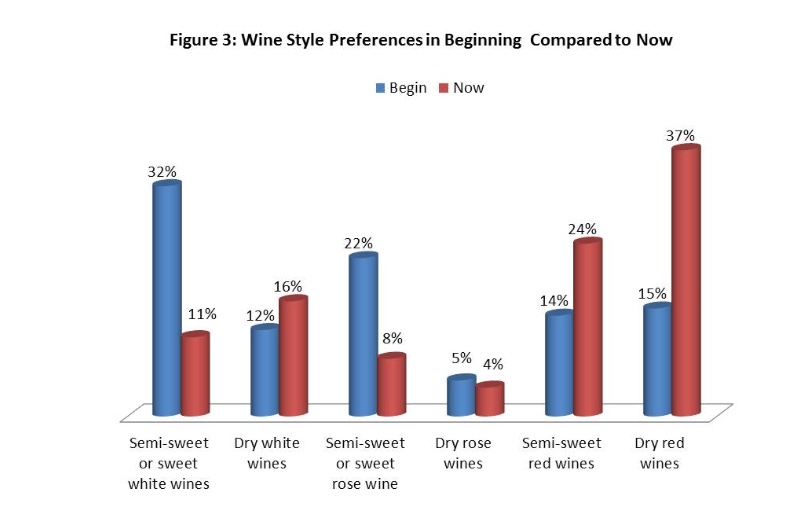Becoming a wine lover requires five ingredients
Were you a wine lover at the very first sip of wine? Do you remember?
Honestly, did you fall in love immediately? If you did, fantastic, but most of us had to develop our palate to start enjoying wine.

Science concluded that it takes several elements to make us appreciate wine. It takes five ingredients.
If you think about it, wine should not please your senses: its alcohol irritates your mouth, its tannins dry your mouth, it smells kerosene or cigar box. And sometimes they taste like rosebuds.
Are all these sensations appetizing?
For sure, we rarely grow up on such flavored diets. Our first beverage coming out of the womb is lightly sweet and smooth. As human beings, we seek sweetness for energy and pleasure and tend to avoid anything sour or bitter.
So how do we suddenly start liking wine, or beer, or coffee for that matter? Well, this transformation is not sudden and takes time. It’s a learning process.
First of all, the first experience sipping wine should be positive and pleasurable.
If you became sick after drinking wine, the likelihood to try drinking wine again becomes weak. If the first experience was a sweet and fruity wine, then it should have positioned you as a wine lover in training. Starting by a leathery and astringent wine would have tested your real intention.
The second ingredient is our cultural heritage.
Serving a bit of red wine diluted in water to a child was a common practice in some European countries like France or Italy. Parents believed that this fortified water would give the child strength and stamina. Many people in America would be horrified by such practice. However, this early exposure to wine as a part of the family diet makes the transition to drink wine later on in adulthood easier.
Growing up in a wine-producing region, like I did, places wine in many family rituals, as I explained in another article.
The culture we grow up conditions our chances to become a wine lover.
The third ingredient is your social surroundings.
You may not have grown up in a wine culture; however, you may become exposed to wine through your social network and your work peers. As a young adult, our friends have some influence on what we like or don’t like because we don’t want to feel out of the group unless you are rebellious, which is fine.
In some work environments or social settings, drinking wine, or collecting wine signals a special status in the society, and that might become a motivation to learn more about wine for some people.
Wine styles have also become fashion items. Chardonnay was the wine to order 20 years back. Then, we went through a Sauvignon blanc phase, a Pinot Noir Hollywood craze, a Moscato season, and rosé has been hot for a few years now.
The fourth ingredient is you, dear wine lover.
Your genes express sensitivity to particular tastes and aromas. As you may remember, although we have 99.8% of our genes in common, they may not light up in the same way. Some people can taste bitterness when it is present at a low level, whereas others can’t perceive anything at a high level of bitter compounds. The bitter-blind person may like a wine you don’t like due to its bitter after-taste.
Finally, as we age, our wine preferences change.
All the ingredients listed above play a role, of course. If you liked to experiment with different wines, then you learned to love less sweet wines. Sonoma State University Professor Liz Thach showed in her research this possibility. On the graph below, most of the people she interviewed started their wine-loving journey with sweet or semi-sweet white wines to end up appreciating dry red wines.
This research team also visualized the evolution of wine preference over time with this wheel (researchers love wheels!).
Science tells us that taste is king in our preferences for food and beverages. However, a beautiful label, an attractive price, or a great story on wine provenance can seduce wine lovers. And all these other ingredients can change the course of our wine-loving journey. More on this later.
Tell me which wine made you start your wine lover journey?
I look forward to reading about your first sip of wine.
Write your comment below.
References used in this article:
Lesschaeve I., 2008. Wine consumer flavour preferences. In proceedings of the 1st Wine Active Compounds symposium, pp 71-74. Chassagne D., University of Burgundy (ed.), OenoPluriMedia, Chaintré, France.
Thach L., 2018. Do Wine Consumer Preferences Change Over Time? New Research Study Provides Some Answers. Wine Business Monthly, April.
Published January 5, 2020
Home > Becoming a Wine Lover





